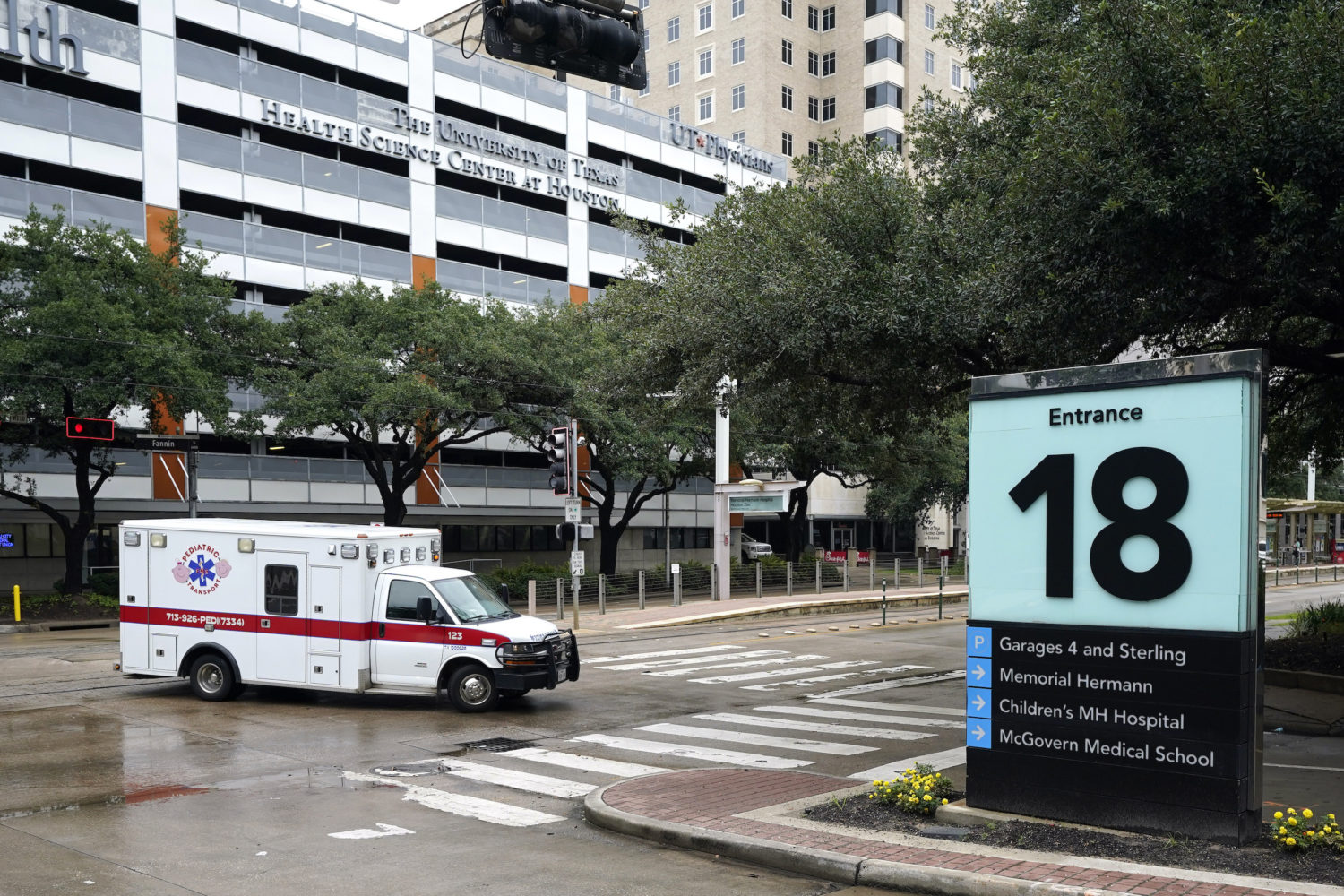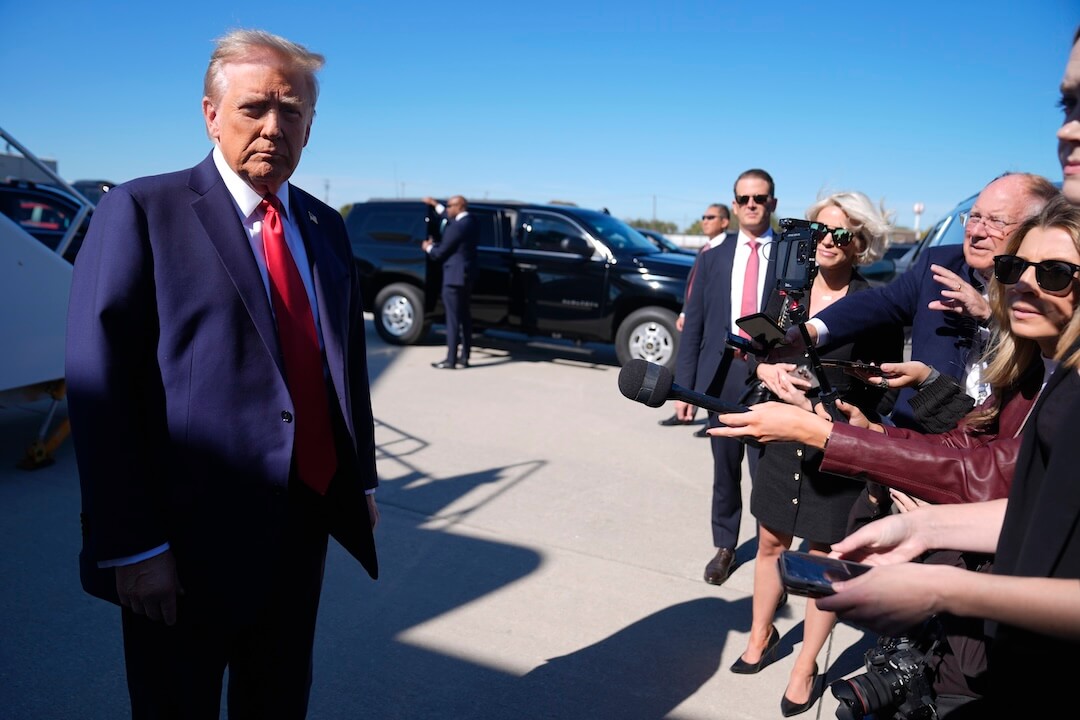 Covering COVID-19 is a daily Poynter briefing of story ideas about the coronavirus and other timely topics for journalists, written by senior faculty Al Tompkins. Sign up here to have it delivered to your inbox every weekday morning.
Covering COVID-19 is a daily Poynter briefing of story ideas about the coronavirus and other timely topics for journalists, written by senior faculty Al Tompkins. Sign up here to have it delivered to your inbox every weekday morning.
Nationwide deaths caused by the coronavirus are forecasted to grow to a range between 159,497 and 213,715, according to an updated model from the University of Washington’s Institute for Health Metrics and Evaluation.
But it does not have to be that way, experts say.
If we all wear masks, they say, we might save 33,000 lives. That is close to the number of people who die in traffic crashes in the United States every year — 38,000. It is close to the number of people who die from firearms in the United States each year — 39,000.
Pay attention to the chart from the University of Washington’s study. The dotted green line is better than the dotted red line, but the deaths are projected to rise into the fall. And that is before a probable “second wave,” which we have known about for months.

Data and graphic from the University of Washington’s Institute for Health Metrics and Evaluation showing the effects of universal mask use versus continued easing of restrictions on masks, social distancing and increased interaction.
For more than a month, health officials have warned us that if we do not stop spreading the virus, we will pay a price in July. COVID-19 illness cases are way up in the United States but deaths are down. But deaths lag behind new cases by a few weeks, so we can expect these record-breaking new cases will show up in deaths in July. The bill is coming due.
We knew when the country loosened up around Memorial Day that cases would go up. Now, we are on the cusp of July 4, and we are also spreading the virus like crazy. If we don’t collectively act to protect each other, health experts are warning we could see a July that marks an exponential growth in cases. Not just a little rise — an explosive increase.
Dallas County, Texas, is considering whether it should turn its convention center into an emergency COVID-19 hospital. Houston’s children’s hospital is admitting adult patients because other hospitals will be needed for COVID-19 cases. Austin’s health officials said they are concerned about whether the city will have enough hospital beds within a couple of weeks and are considering setting up an emergency overflow hospital.
And hospitals in Texas’ Bexar, Dallas, Harris and Travis counties are stopping nonessential procedures as of Saturday to keep enough beds open for COVID-19 patients.
This week, The Washington Post reported that we will probably see a lot of deaths within a couple of weeks:
“Deaths always lag considerably behind cases,” Anthony S. Fauci, the nation’s top infectious-disease specialist, told Congress at a hearing Tuesday. In the weeks to come, he and others said, the death toll is likely to rise commensurately.
Which means Arizona, Texas and Florida, states that reopened early and now are experiencing runaway infection rates, are likely to be burying more dead in July.
Since we are setting new records for cases daily, doesn’t it seem like a good time to restart the daily White House Coronavirus Task Force updates?
The individual indicators that add up
This week, a few individual developments about the COVID-19 pandemic shook me. The New York Marathon, scheduled for November, is canceled. I was there when they ran a year ago. 50,000 runners pass through each borough. This would have been the 50th anniversary of the New York Marathon. (The Boston Marathon, which had been postponed to September from April, was also canceled last month.)
It is the first time I have thought that far out, about how life will change for Thanksgiving and Christmas and the new year. Without a vaccine, big gatherings seem unlikely. Even if a vaccine is produced in record time, rolling it out to billions of people worldwide will take more than a year. It is all starting to set in.
The White House announced that President Donald Trump plans to headline a July 3 fireworks display at Mount Rushmore. The president has wanted to do that for years, but the National Park Service stopped fireworks at the site a decade ago over concerns that they could spark wildfires, to say nothing of concerns for the wildlife. Drought conditions have expanded across South Dakota, with 72% of the state in a “moderate drought,” 42% in a “severe drought” and 11% in “extreme drought,” according to the U.S. Drought Monitor.
There are indications that much of Broadway has little hope of reopening before 2021. A group of experts launched a website this week to try to help.
Delta Airlines said that an estimated 500 employees have contracted COVID-19 and at least 10 of them died. Keep in mind that the company has 90,000 employees. But 500 is still a huge number.
Kentucky Derby officials said they plan to have some spectators when the horses run on Sept. 5.
Cruise lines that hoped to sail in August now are saying September is the earliest they might leave port, and that is just an optimistic guess.
New Jersey and New York asked people who visited states with a lot of COVID-19 cases to self-quarantine for two weeks before they go out in public. The White House said that President Trump will not change his plan to travel to New Jersey this weekend after he visited Oklahoma and Arizona earlier this week. The president’s travel to New Jersey is a visit to his golf club in Bedminster.
Eight Trump staffers, including two Secret Service agents, have tested positive for COVID-19. Dozens of secret Service agents who protected the president in Tulsa during his rally there last weekend are now in a two-week quarantine.
Are you keeping track of the number of retailers that are filing for bankruptcy?
That train kept moving down the tracks this week, too.

(Yahoo Finance)
And, oddly, now that some stores are reopening, the bankruptcies will increase. That might not make sense until you understand that companies that go under need a way to liquidate inventory and they can’t do that very well if the doors are closed. Yahoo Finance explored that story:
First, preparing for a structured entry into bankruptcy typically takes two to three weeks. Retailers were only thrust into mass social distancing driven store closures in mid- to late-March. Most held out hope they would reopen stores in April, which pushed off bankruptcy planning. Secondarily, even the worst positioned big-name retailers still had enough cash on hand to move through April and May (especially with workers furloughed) — that allowed executives to consider all options besides a headline-grabbing bankruptcy.
And lastly, one of the benefits of a retailer filing for bankruptcy is to raise cash for creditors by holding store closing sales. That couldn’t happen with state mandated store closings.
Now all bets are off this summer as states allow malls and retailers to reopen.
“I think many of these companies will file (for bankruptcy), and it’s not a handful. It’s several dozen. And that’s a scary number. It’s far more than we have seen over the last several years combined,” says Stifel managing director Michael Kollender, who leads the consumer and retail investment banking group for the firm. Kollender and his colleague James Doak at Miller Buckfire (Stifel’s restructuring arm, where Doak is co-head) have worked on dozens of consumer and retail bankruptcies in recent years, including Aeropostale, Gymboree and Things Remembered.
So far, there are no COVID-19 spikes from Black Lives Matters protests
If there was going to be a spike directly linked to the Black Lives Matter protests, we should be seeing it by now. And, so far, there has been no spike. CNN reported:
A new study, published this month by the National Bureau of Economic Research, used data on protests from more than 300 of the largest US cities, and found no evidence that coronavirus cases grew in the weeks following the beginning of the protests.
In fact, researchers determined that social distancing behaviors actually went up after the protests — as people tried to avoid the protests altogether. But obviously, these demonstrations caused a decrease in social distancing among actual protesters.
“Our findings suggest that any direct decrease in social distancing among the subset of the population participating in the protests is more than offset by increasing social distancing behavior among others who may choose to shelter-at-home and circumvent public places while the protests are underway,” the report reads.
We all need to learn how to do “airplane arms”
We can learn some things about how child care centers have been operating with remarkably low COVID-19 cases during the pandemic.
A Brown University survey of 916 YMCA centers serving more than 20,000 children found only 1% of staff and 0.16% of children were confirmed as COVID-19 infected. How did they do it? NPR reported:
Staff came up with creative ways to reinforce frequent and thorough hand-washing. Libby Corral is chief operating officer of the Valley of the Sun YMCA, which operated nine emergency child care sites across Arizona (this month they expanded to regular camp programming). She says that at the beginning of each 30-minute activity, such as sports or craft time, children get a stamp or marker doodle on their hands, which they have to wash off before moving on to the next activity.
“We were teaching them not just ‘rinse your hands,’ but ‘scrub them.’ And instead of having to dread washing their hands, they were able to get excited and laugh and have fun while they were doing that.”
They also reinforce social distancing by having the kids make “airplane arms” when they’re standing in line or moving from place to place. And children get their own materials, such as art supplies, to use from day to day, rather than sharing. Having individual materials worked so well, says Corral, that they plan to make it a policy in the future.
The NPR story has a good bit more detail about all of the things the centers have done so far this summer and raises questions about how schools can or can’t mimic some of their successes this fall.
A tax incentive to take a vacation during the pandemic?
I have no idea if this idea has a chance to fly but Arizona Republican Sen. Martha McSally (who is currently way behind her Democratic opponent) introduced legislation this week to encourage you to take a vacation by giving you tax credits.
The bill, called the “American TRIP Act,” would allow you to write off spending on lodging, entertainment and other stuff if you take a vacation in the U.S. and its territories. The bill specifies the entertainment has to be “live entertainment events,” including sports. It also allows you to write off “food and beverages.” (Can’t you just imagine people writing off booze and adult entertainment expenses as vacation tax credits?)
Oh and to qualify as a “vacation trip” you would have to go at least 50 miles away from your home.
It may strike you as a tad odd that during a pandemic and a surge in new cases the government might give you a tax credit to get out there and take a vacation. But there it is.
We’ll be back Monday with a new edition of Covering COVID-19. Sign up here to get it delivered right to your inbox.
Al Tompkins is senior faculty at Poynter. He can be reached at atompkins@poynter.org or on Twitter, @atompkins.







